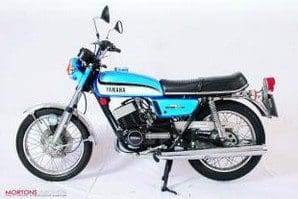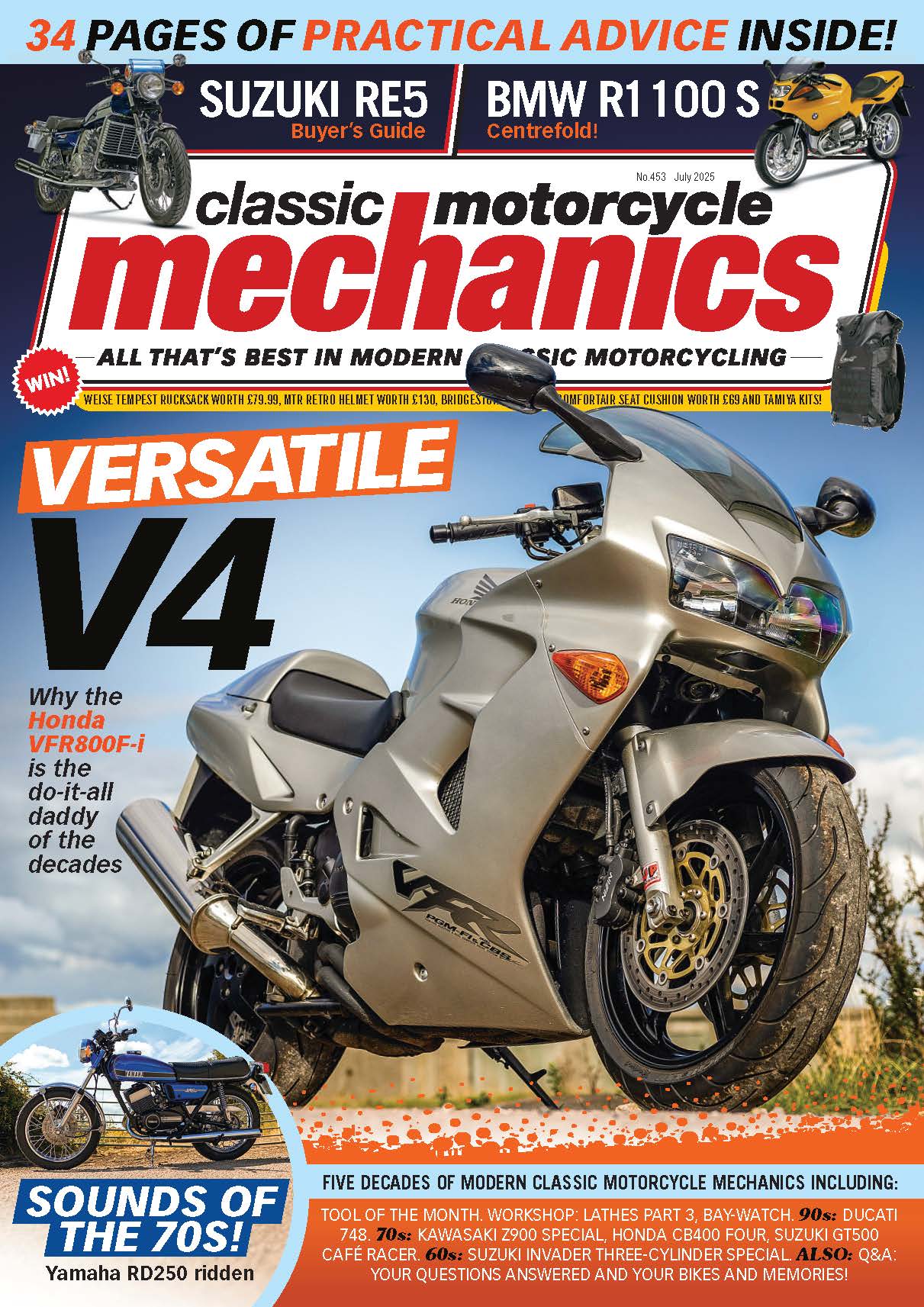

Yamaha launched its first 247cc two-stroke twin, the YD1, in 1957. Following a series of piston port YDS models, the RD250 (for ‘race developed’) was launched in December 1972.
The Yamaha RD250A was the first production road bike to use reed valves to control the incoming charge, giving rise to the ‘torque induction’ stickers on the side panels. This system improved usable mid-range power without compromising overall performance, but worries about the reliability of the reed valve petals prevented the system finding favour on the racetrack.
First RD250s
While the very first RD250s came with a twin leading shoe drum front brake, inherited from the previous model YDS7, European models were equipped from the start with a twin-piston caliper front disc brake. The engine’s bottom end was practically identical to the YDS7 as was the frame, which had some minor changes around the upper frame rails. Early production models were supplied with five-speed gearboxes, but owners soon discovered the box in fact contained six sets of cogs, with sixth gear blanked off with a stopper on the selector mechanism. Modifying the gearbox to gain the extra gear involved not only removing the stop plate but also fitting a revised pawl plate.
 With a top speed of 92.8mph the RD went well against Kawasaki’s 94mph rival, and at £427 was £22 cheaper. The RD250A remained in production until 1975, when the RD250B with revised cylinder heads and gear ratios replaced it. In 1976 the RD250C replaced the B, with a major styling update, which saw the introduction of Yamaha's ‘coffin tank’ styling and ‘speed block’ paint schemes. The final RD250 was the 1979 F model, which now featured cast wheels and electronic ignition, though top speed was down on the original to 88.49mph.
With a top speed of 92.8mph the RD went well against Kawasaki’s 94mph rival, and at £427 was £22 cheaper. The RD250A remained in production until 1975, when the RD250B with revised cylinder heads and gear ratios replaced it. In 1976 the RD250C replaced the B, with a major styling update, which saw the introduction of Yamaha's ‘coffin tank’ styling and ‘speed block’ paint schemes. The final RD250 was the 1979 F model, which now featured cast wheels and electronic ignition, though top speed was down on the original to 88.49mph. ![]()




